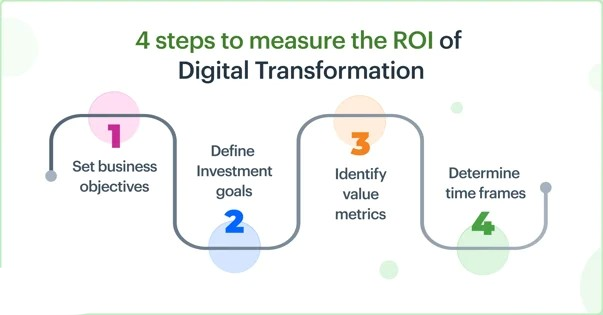
Impact of Culture and Leadership in Digital Transformation
A successful digital transformation hinges on the strategic orchestration of two fundamental elements: a receptive organizational culture and a proactive, forward-thinking leadership. Instead of merely implementing new technologies, a “unique” and “different” approach recognizes the intricate, reciprocal relationship between these forces, treating them not as separate components but as a unified system.
This perspective emphasizes that technology is merely the catalyst, while culture and leadership are the enabling agents that determine if the transformation will succeed or fail.
Rather than being a top-down mandate, an innovative digital culture is co-created through a shared process of discovery and adaptation. Its impact includes:
- Empowering the periphery: Instead of rigid hierarchies where decisions are funneled to the top, digital transformation thrives when leaders empower those on the front lines to make decisions. They are closest to the customer and the technology, making them best suited to identify opportunities and solve problems.
- Narrative of experimentation: A co-created culture builds an institutional narrative that normalizes and celebrates experimentation and failure as a necessary part of progress. It moves beyond merely tolerating risk to actively rewarding the effort, learning, and insights gained from projects that don’t succeed.
- Shared digital fluency: A culture of continuous learning moves beyond isolated training programs to create a shared sense of digital literacy across the entire organization. This elevates the company’s collective “digital quotient” (DQ) and ensures a common understanding of new tools and processes.
- Ecosystemic thinking: Digital culture extends beyond the company’s walls. It shifts from an internal focus to a broader ecosystem approach, fostering collaboration with external partners, suppliers, and even competitors to innovate and create new value.
The different approach of augmented leadership
Digital transformation also changes the very nature of leadership itself. Instead of traditional management, effective digital leadership becomes a dynamic, augmented role.
- Leading with data, deciding with wisdom: Leaders must leverage AI and data analytics to augment their decision-making, moving from intuition-based choices to data-informed ones. This creates a new hybrid model where algorithms assist with trend analysis, but human wisdom, empathy, and ethical judgment remain paramount.
- The leader as an orchestra conductor: Rather than controlling individual instruments, digital leaders orchestrate highly skilled, autonomous teams. They define the overall vision and purpose, but empower experts to play their part, creating a cohesive, cross-functional performance.
- Managing ambiguity as a core competency: Digital leaders thrive on uncertainty, viewing market shifts and technological disruptions as opportunities rather than threats. Their leadership is less about adhering to a rigid plan and more about maintaining agility and resilience for the long term.
- Empathy as a strategic tool: As workflows change, leaders must address employee concerns with empathy and transparent communication. Involving employees in the design process and actively listening to feedback builds trust and reduces resistance to change, transforming apprehension into buy-in.
The convergence of culture and leadership
The truly unique impact occurs at the point where culture and leadership converge.
- Behavioral odelling: A leader’s actions are cultural signals. When a senior leader publicly champions a digital project, admits a failure, and openly learns from it, they reinforce the cultural values of innovation and psychological safety.
- Cultural feedback loops: Digital tools enable continuous feedback loops, such as pulse surveys, which allow leaders to quickly gauge the cultural health of the organization and make immediate course corrections. This creates a dynamic, responsive cycle of cultural evolution.
- Talent and value alignment: Leaders don’t just hire for technical skills; they recruit and promote individuals who embody the desired digital culture. This ensures that the organization’s human resources are aligned with its digital ambitions, creating a self-reinforcing loop of progress.
Ultimately, the most unique impact is seen in the organizations that recognize and intentionally cultivate this symbiotic relationship. These are the companies that do not just survive a digital transformation—they become a different kind of organization altogether, one that is perpetually evolving, learning, and ready for the future.
